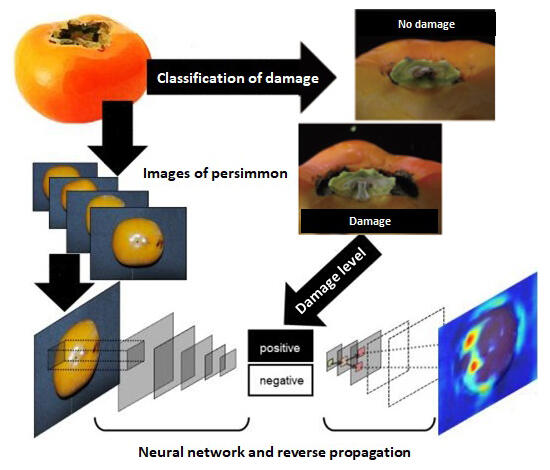Sexual systems in plants have evolved from bisexual flowers in which stamens and pistils coexist, to separate female and male plants. However, cultivated persimmons produce both male and female flowers on a single tree, and in rare cases, it is known that male flowers can be ancestral to bisexual flowers. So, why do these sexual fluctuations occur? Associate Professor Takashi Akagi of the Graduate School of Environmental and Life Science, Okayama University, has identified the mechanism behind the fluctuation seen in the sexual systems of plants, which has been a mystery for nearly 100 years, through the persimmon. The mechanism is expected to be applied to technologies that can freely control "crop sex," which is important for agriculture.
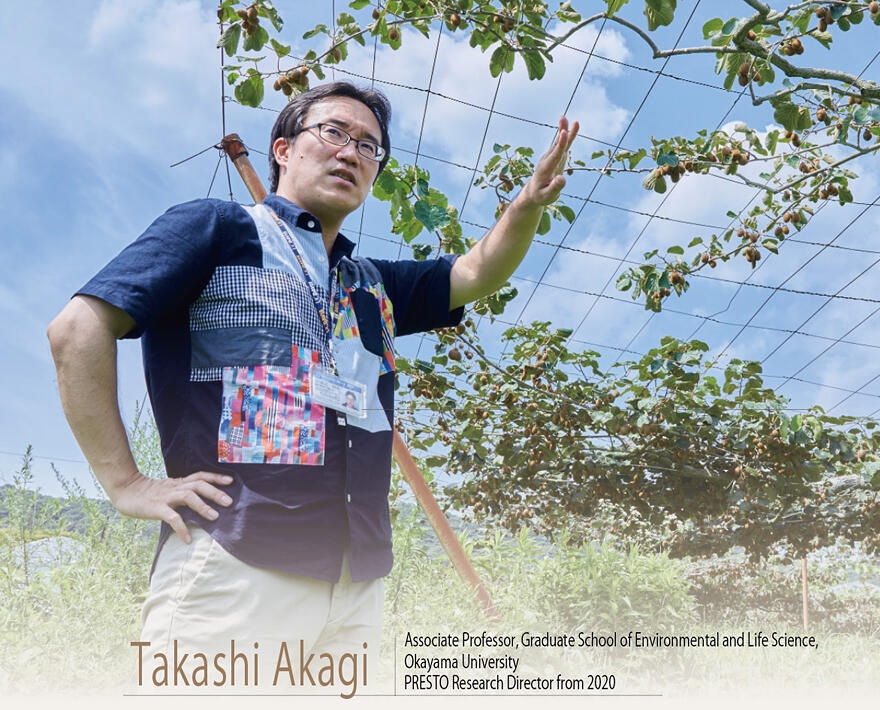
Integration of agricultural science and bioinformatics discovers first gene in plants
Plants and animals possess "sex" as a mechanism for maintaining genetic diversity. While animals are usually either the male or female sex in a single individual, plant sexes have evolved to become dioecious from a bisexual ancestor where males and female flowers coexisted, now separating into male trees that produce only male flowers and female trees that produce only female flowers. In addition to this, plants also express diverse sexuality, including bisexual plants with both male and female flowers on a single tree. It has long been a mystery why plants express such diversity.
Research on plant sexuality began in the early 1900s. It is now clear that the sex of plants, like that of animals, is controlled by sex chromosomes, and sex chromosomes have been identified in a variety of plants. However, the genes involved in determining sex have remained unknown for nearly 100 years, and the mechanisms that control sex in plants have remained hypothetical.
The first sex-determining gene in plants was discovered in 2014. The sex-determining genes, named OGI (male tree) and MeGI (female tree), were discovered by Takashi Akagi, an Associate Professor in the Graduate School of Environmental and Life Science at Okayama University, who was majoring in horticulture at Kyoto University at the time. Akagi also conducted bioinformatics research at the University of California, Davis, in the United States, where he was a visiting researcher, and discovered a sex-determining gene in dioecious Caucasian persimmons.
The Diospyros genus has not had any genome information collected and no genetic maps have been developed. Therefore, using a genome sequencing technology called a next-generation sequencer, he analyzed the genome from various perspectives, leading to the discovery of the sex-determining genes, OGI and MeGI. At the same time, he identified the mechanism of sex determination, in which OGI, an untranslated small-RNA on the Y chromosome, induces male development by preventing MeGI-induced feminization (Figure 1).
Figure 1: Mechanism of sex determination by OGI gene (MeGI gene system) in the Diospyros genus.
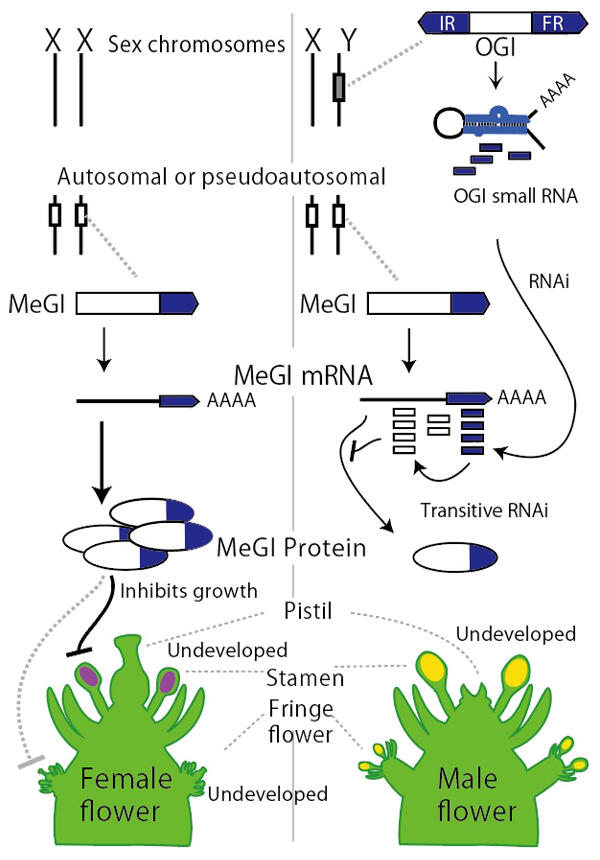
"At the time, I didn't know that sex-determining genes in plants had not been discovered," commented Akagi. He chose the persimmon as his research theme during his study abroad because its diverse expressions of sexuality seen in cultivation and breeding, were agricultural issues. "I thought that the fusion of agriculture and bioinformatics might reveal things that had not been seen before, so I joined a laboratory that handled genome information, which was completely new to me in the United States. I think that led to the results," he recalls.
Bisexual kiwifruit flowers developed - Self-pollination improves productivity
After returning to Japan, Akagi continued his research on sex determination in plants at Kyoto University. He started his research on plant sexuality through the PRESTO project, "Study for the flexiblization of sex expression depending on environmental factors in Diospyros genus" (FY2015-2018). The discovery of two sex-determining genes in kiwifruit, "Shy Girl" and "Friendly Boy," and the identification of the evolutionary mechanism by which plants acquire sex is one of his research interests.
Akagi analyzed how these two genes are related to the evolution of gender acquisition from the viewpoint of genetic informatics. He found that from the originally hermaphroditic individuals, those that lost the Friendly Boy gene became X chromosomes and those that newly acquired the Shy Girl gene became Y chromosomes, and that the combination of the two determines sex (Figure 2).
Figure 2: Evolution of gender acquisition in kiwifruit
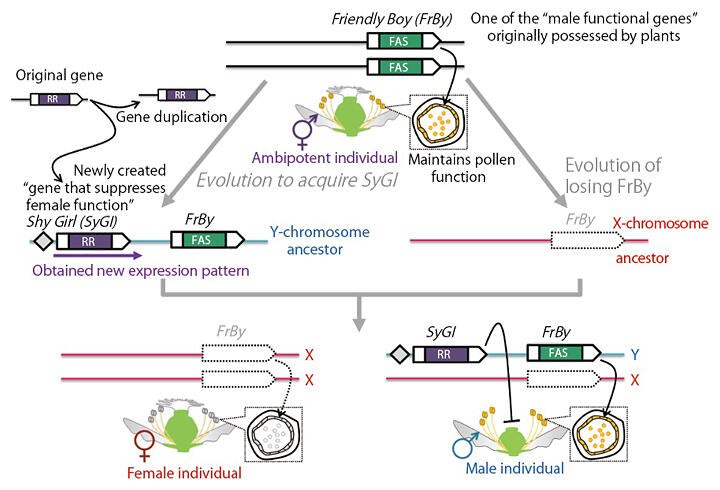
This finding also proved the hypothesis of the two-mutation model proposed in 1978. In two-mutation model, the evolutionary process in which plants acquire sex from bisexuality begins with the mutation of genes that maintain males, resulting in the creation of the X chromosome. Furthermore, a new gene that suppresses feminization is created, resulting in the formation of a Y chromosome and, consequently, the formation of sex. To clarify the functions of the Shy Girl and Friendly Boy genes, he mutated the Shy Girl gene in male trees that lacked pistils in their flowers by gene editing and introduced the Friendly Boy gene in female trees that could not produce fruit without male pollen. As a result, he succeeded in producing self-pollinated bisexual flowers that bore fruit in both cases.
This achievement has had a significant impact on the agricultural industry. Until then, kiwifruit had both male and female plants, and the male plants needed for pollination had to be raised at the same time as the female plants to flower, which affected their productivity. However, genome editing of sex-determining genes has produced kiwifruit with bisexual flowers, thus improving the yield rate.
Incidentally, in order to study a plant, one must actually grow it. However, it takes a long time for plants to bear fruit when grown from scratch from conventional cultivated seeds. Kiwifruit were no exception, taking nearly six years to bear fruit. Therefore, in his research on the Shy Girl and Friendly Boy gene, Akagi started by creating an early-blooming kiwifruit that bears fruit in about six months by genome editing with a collaborator in New Zealand (Figure 3).
Figure 3: Early blooming kiwifruit under cultivation in the laboratory
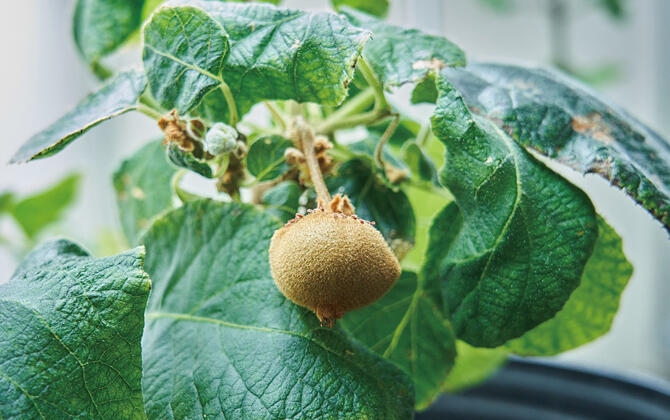
Genome doubling during mass extinction - Evolution for survival
To understand how sex-determining genes emerged during plant evolution, Akagi and his colleagues sequenced the entire persimmon genome in the Caucasian persimmon plant. They found traces of whole genome doubling during the evolutionary process (Figure 4). Genome doubling is a phenomenon in which the genome, a single set of genetic information, doubles in size. They also discovered that the period of genome doubling occurred approximately 60-70 million years ago, coinciding with the final mass extinction period when the earth was hit by a meteor. In other words, sex segregation by the persimmon sex-determining genes OGI and MeGI is a property acquired uniquely in the Diospyros genus through genome doubling.
Figure 4: Whole genome doubling during evolution in plants.
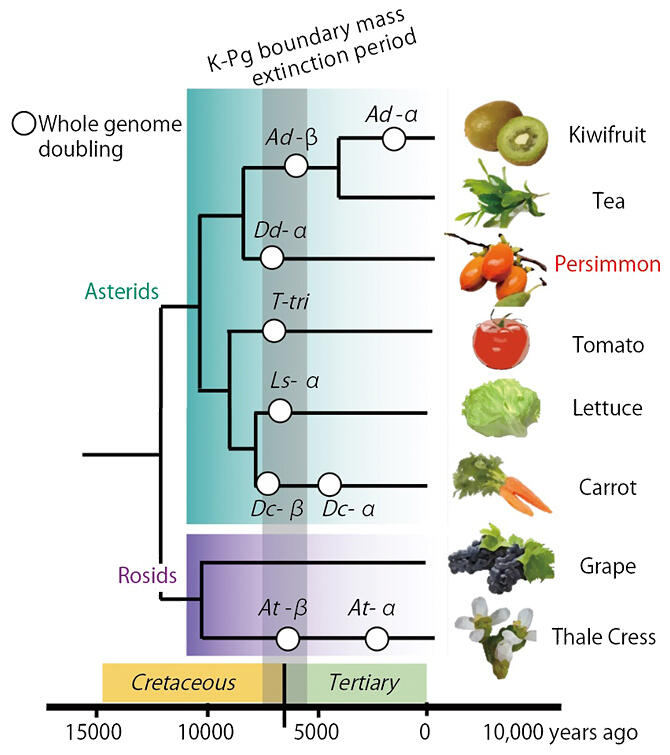
"Genome doubling is not unique and always occurs at a very low frequency. It is a so-called mutation. As such, it is not so much that genome doubling occurred all at once during the mass extinction, but rather that genome-doubled individuals happened to survive in an environment where they would not normally survive after a meteor struck. Genome doubling and gene doubling have been repeated since then, and each time a major evolutionary event occurs, which is an interesting research theme," says Akagi.
Mixed male and female flowers on one tree: Identifying sexual "fluctuations" in plants
Next, Akagi and his colleagues conducted research to identify sexual variations in plants. The cultivated persimmons we usually eat have a mixture of male and female flowers on a single tree, but on rare occasions, bisexual flowers are produced. Why do plants vary in sexuality in a way that seems to be a kind of ancestral reverting? In fact, the Caucasian persimmon, for which the sex-determining gene was discovered, is a wild diploid species with the same paired chromosomes as humans, and is divided into male and female trees. Cultivated persimmons, on the other hand, are hexaploid, with male and female flowers on each tree. Akagi and his colleagues had already identified that the mechanism by which female and male flowers appear simultaneously on a hexaploid tree is controlled by memories written in DNA called "epigenetics."
Why, then, do persimmon trees, which have both male and female flowers, have bisexual flowers? Using a genetic informatics method called gene co-expression network analysis, Akagi and his colleagues discovered a new gene, DkRAD, that promotes the change to hermaphroditic flowers. The DkRAD gene is responsible for the formation of pistils on stamens by acting on plant hormones such as cytokinin and abscisic acid, resulting in the transformation of flowers into bisexual flowers (Figure 5 and Figure 6). Originally known as a gene related to petal shape, the function related to gender change is a new function discovered only in persimmon.
The DkRAD-mediated change to bisexual flowers occurs only in hexaploid cultivated persimmons and not in wild diploid persimmons. "It has long been said that genome doubling can cause the formation of sex or the reversal of sex. At first glance, the mechanism by which bisexual flowers are created by the DkRAD gene may seem like a reversion to the ancestor, but in reality, it is thought that sex was born from bisexual flowers, and that they changed to bisexual flowers after undergoing new evolution," explains Akagi.
Figure 5: Establishment process of "polyploidization" via genetic evolution of persimmon.
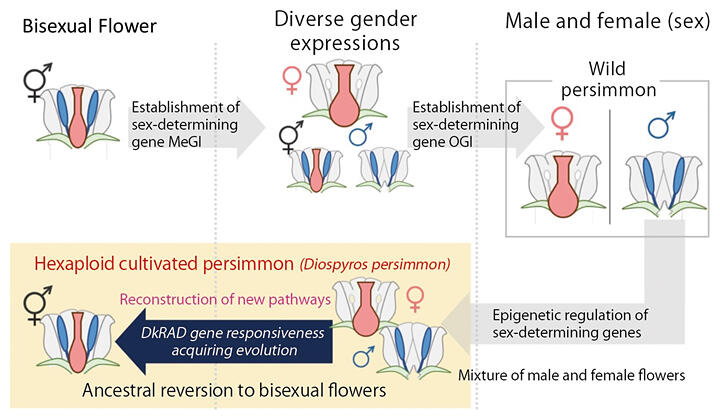
Figure 6: Ancestral to bisexual flowers in cultivated persimmons.
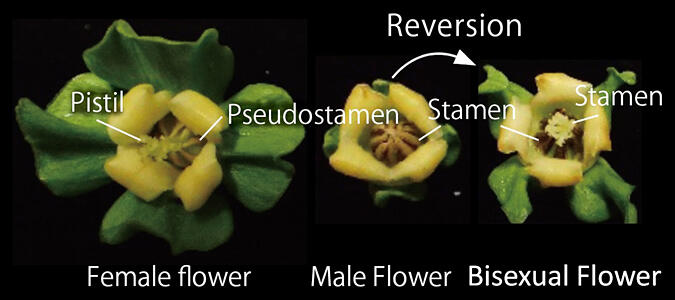
An advisor's words of encouragement ― Introducing "explainable AI" into research
While his previous research focused on the evolution of plant sexuality, Akagi has also been engaged in research that integrates agricultural science and AI. By incorporating the AI technology of deep learning, he has succeeded in developing a technology that uses AI to analyze the entire genome information of tomatoes and predict the gene expression when the fruit ripens (Figure 7). In addition, the development of technology for detecting internal defects in persimmons is being implemented in society in cooperation with prefectural experiment stations and manufacturers (Figure 8).
He says that his encounter with Professor Seiichi Uchida of the Graduate School and Faculty of Information Science and Electrical Engineering, Kyushu University, who was his advisor for the PRESTO research project, was a major factor in his decision to incorporate AI into his research. While working in a laboratory in the U.S. that handled genomic information, he had wanted to incorporate AI into agriculture and informatics, but, "I was hesitant because the decision-making process of AI at the time was a black box," he explains. "When I met Dr. Uchida, I learned that there was an explainable AI, and we decided to do research together." Some people would question why he was doing AI when he had already succeeded in determining the sex of plants. This fear of failure put a damper on making any breakthroughs. "In Japan, there are many people who only build on past methods and don't start new things until someone else does," says Akagi. "However, informatics is changing so fast now that it may be too late if we don't take action."
Research on the evolution of plant sexuality has revealed that plants have developed unique traits through repeated genome doubling and gene doubling during the course of evolution. However, the majority of new functional molecules that drive new traits through doubling remain unexplored. Therefore, as a new PRESTO theme, Akagi is focusing on the evolution of Ericales fruit crops and tomatoes, and is conducting research to search for novel functional molecules that are driven in a lineage-specific manner by genome doubling and gene doubling. The discovery of various new functional molecules will likely contribute greatly to the future development of agriculture.
(TEXT: Sachiko Ito, PHOTO: Akihiro Ito)
Figure 7: Model tomato plant "Micro Tom" under cultivation in a greenhouse
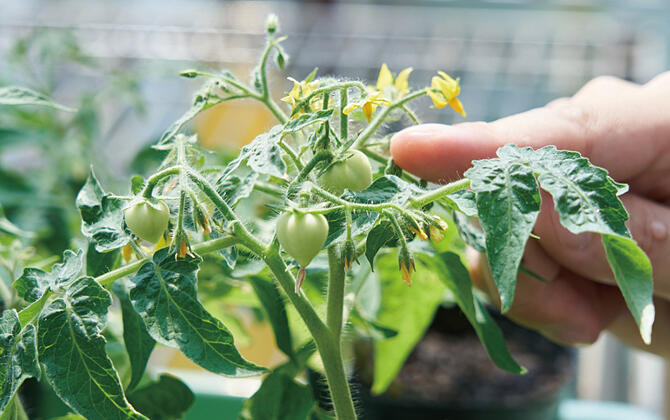
Figure 8: Deep learning model for predicting internal damage in persimmons.
